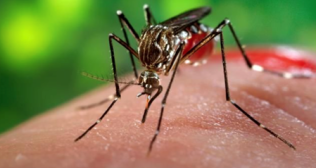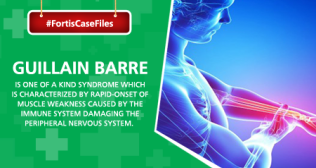What Is Gouty Arthritis? Causes , Symptoms & Treatment Of Gout
Overview
Gout – also known as gouty arthritis – is a common form of arthritis which can be extremely painful. It usually occurs as a result of uric acid building up in the bloodstream and can affect the big toe, ankle, foot, knee, wrist, hand and elbow joints. This, in turn, causes severe inflammation, pain, redness, and swelling in the joints. Moreover, there are chances that gout may remain dormant for a number of years but can get triggered for a variety of reasons. This condition is usually more prevalent in men and women after menopause. Further, although it can affect men of any age, the first attack usually strikes men between the ages of 40 and 50.
There’s also a common misconception that gout is caused by overeating and drinking excessive amounts of alcohol. Although this could increase the likelihood of getting gout, it’s not the whole story and hence not the primary cause of the disorder.
Symptoms
An attack of gout can occur at any given point of time, but it often starts at night more often than not. An individual might go to sleep feeling no signs of discomfort and then suddenly wake up in the middle of the night with a painful episode of severe joint inflammation. In some cases, it might affect more than one joint at a time. When that happens, the condition is called polyarticular gout. Although rare, there are chances of gout developing in joints such as the spine, shoulders or hips as well.
In addition, in most individuals, there are no signs of further symptoms after a first gout attack. The chances of another gout episode, however, increases over time and affected individuals will usually suffer another attack in the next 6 to 12 months. The symptoms of a gout attack include:
- Sudden, excruciating and throbbing pain in one more joint
- Red, shiny skin around the joint.
- The affected joint that might be hot to touch
- Flu-like symptoms, including fever and chills
- Reduced movement making walking and standing impossible
- Severe swelling and inflammation in and around the joint area which can’t even bear the slightest touch.
- Extreme tenderness
- Development of tophi – lumps of urate crystals that form under the skin – especially in people suffering from chronic gout
- Loss of appetite
- Nausea
- Itchy, flaky skin as the swelling subsides
Causes
Gout occurs when there is a build up of abnormally high levels of uric acid in the bloodstream (also referred to as hyperuricemia) and tissues. Uric acid is a basic waste product which is usually excreted by the kidneys via urine. However, when the kidneys have difficulty excreting uric acid, the result in the accumulation of high levels of uric acid. This condition is called hyperuricemia and it may lead to gout. However certain individuals despite having high levels of uric acid don’t develop gout while others with the same high levels tend to do so. There’s no explanation why this occurrence happens. When the uric crystals deposit themselves in the joints, it results in the inflammation of the joint lining or the synovium.
These uric crystals also have a tendency to get collected in the big toe owing to it having the lowest temperature. After several years, a build-up of uric acid crystals in the joints leads to the formation of large deposits called tophi that resemble lumps just under the skin. Tophi can form around the affected joint areas, fingers, toes, or even the ear towards the outer edge. If the tophi are not prevented or treated in time, they can grow thus causing pressure damage to your cartilage and bone which eventually can lead to damaged joints. When this happens, the condition is described as chronic tophaceous gout.
Risk factors
There are certain risk factors that can cause an increase in levels of uric acid which, in turn, can lead to the development of gout. These are:
- Being Overweight or Obese
- High alcohol intake (particularly beer)
- Certain medicines eg: diuretics, ACE inhibitors, and beta blockers
- People who have had an organ transplant
- A genetic predisposition
- Injury to a joint
- Consuming large amounts of red meat and fatty fish
- Recent surgery or trauma
- An illness, such as pneumonia or flu
- Long-standing kidney disease.
Treatment
Once the doctor has examined the affected joint and checked the full medical history, he will proceed to take a full diagnosis of gout. This may include taking X-rays of the affected area in order to check for joint damage as well. Although gout cannot be completely cured, the good news is that can be very successfully treated. That being said, the sooner a patient initiates a treatment and pain management plan, the quicker he/she will be back on their feet.
Getting gout treated primarily comprises of taking a series of medications and diet control. This is done to ensure the prevention of future attacks and to make sure that the inflammation is under control and for pain relief. The doctor will then proceed to develop a management plan to control the factors that increase the likelihood of gout worsening including cutting down on alcohol intake and ensuring cholesterol, blood pressure, diabetes, and obesity are under control.
Patients will initially be advised to put ice on the affected joint as it will help reduce the inflammation. In order to relieve the pain and swelling during an acute or early phase of a gout attack, doctors prescribe medications called colchicine, nonsteroidal anti-inflammatory drugs (NSAIDs), corticosteroids and/or adrenocorticotropic hormone (ACTH). Painkillers such as codeine, hydrocodone, and oxycodone will also be prescribed to relieve the pain.
Further, the doctor might prescribe the following medications to lower levels of uric acid, treat tophi, and to prevent future episodes such as febuxostat, allopurinol, probenecid, and/or sulfinpyrazone.
Patients will also be advised to increase fluid intake by drinking at least 10-12 glasses of water, especially in case he/she has kidney stones. This is done with the intention of flushing out the excess build-up of uric acid crystals out of the body.















}}drupal-data/images/blog-lists.png)


